Turntable Motor Troubleshooting Tips
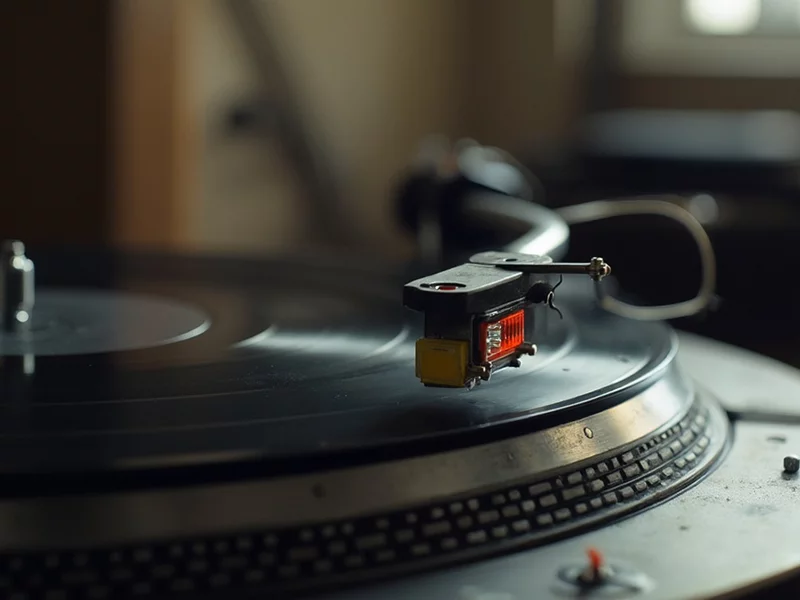
Are you tired of your beloved vinyl gathering dust because your turntable won't spin? Understanding the common signs of turntable motor issues can make all the difference in restoring your analog joy!
What You Will Learn
- Recognize key symptoms of turntable motor problems, such as speed fluctuations and unusual noises.
- Identify the differences between DC and AC motors to make informed choices for your setup.
- Perform initial checks on power connections and fuses to troubleshoot basic issues quickly.
- Utilize a multimeter to diagnose motor functionality and address any failures effectively.
- Learn about necessary maintenance practices to prolong the lifespan of your turntable motor.
Turntable Motor Troubleshooting Flow
This flow outlines the essential steps for diagnosing and addressing common turntable motor issues, from initial checks to advanced diagnostics.
Initial Checks: Power & Connections
- ✓ Power supply connected
- ✓ Fuses intact
- ✓ No loose/damaged connections
Quick checks can prevent deeper issues.
Assessing Turntable Mechanism
- ✓ Belt drive: check belt integrity & seating
- ✓ Direct drive: check for binding in motor/platter
Drive system inspection is crucial.
Diagnosing Motor Functionality
- ⚠ Does motor spin?
- ⚠ Use multimeter to test windings/capacitors
Deeper dive into motor's electrical health.
Identifying Noise & Vibration Issues
- ⚠ Humming: check connections, bearings
- ⚠ Rattling: inspect for foreign objects
- ⚠ Vibrations: ensure level support
Listen for clues from your turntable.
Understanding Turntable Motor Issues: Key Concepts
Every audiophile knows that a turntable's motor is its beating heart! Unfortunately, just like any mechanical component, it can run into issues. Understanding common turntable motor problems can save you a lot of time and frustration. In this section, we'll explore some typical issues, including:
- Turntable not spinning
- Speed variations causing playback issues
- Unusual noises, such as humming or rattling
By identifying these problems early, you can take steps to restore your beloved record player to its former glory!
What Are Common Turntable Motor Problems?
When it comes to turntable motors, there are a few frequent offenders that you should be aware of. The most prominent issues often involve the motor not spinning, which can leave you with a vinyl collection that’s simply gathering dust. Additionally, you may notice speed variations—sometimes your records sound like they're running too fast, or other times, too slow. Lastly, keep an ear out for unusual noises. If your turntable starts to hum like it's auditioning for a band, it might be trying to signal that something's wrong!
Having faced these challenges firsthand, I can assure you that diagnosing the issue early can mean the difference between a quick fix and a more complicated repair down the line. For further insights into common motor problems, you can refer to resources like Origin Live's technical support page, which details DC turntable motor issues.
The Importance of Identifying Symptoms
Recognizing the specific symptoms of a failing motor can significantly aid in troubleshooting. For example, if you notice a platter wobble, it can indicate problems with the motor's alignment or the components surrounding it. Similarly, humming sounds might suggest issues with the power supply or motor bearings. Being aware of these signs not only helps you understand what's going on but also empowers you to act swiftly and effectively!
- Platter wobble: Indicates alignment or bearing issues
- Humming sounds: May point to power supply or motor problems
- Speed fluctuations: Can signal a need for belt replacement or motor adjustment
By familiarizing yourself with these symptoms, you’ll become a more confident turntable owner, ready to tackle any issues that arise!
Types of Turntable Motors: DC vs. AC
Understanding the types of motors used in turntables is essential, as they each come with their own strengths and weaknesses. The two main types are DC (Direct Current) and AC (Alternating Current) motors. DC motors are known for providing consistent speed and are often quieter, making them ideal for high-fidelity listening. On the other hand, AC motors are typically used in more traditional setups and provide excellent torque, which can be beneficial for heavier platters.
Whether you're a novice or an experienced audiophile, knowing the differences between these motors will help you choose the right system for your needs. It will also give you insights when troubleshooting potential motor issues!
Step-by-Step Troubleshooting for Turntable Motor Issues
Initial Checks: Power and Connections
Before you dive into deeper troubleshooting, let’s start with the basics—checking the power and connections! Ensuring that everything is plugged in correctly can save you a lot of hassle. Here’s a quick checklist:
- Make sure the power supply is connected properly.
- Inspect fuses to confirm they’re intact.
- Check for any loose or damaged connections.
Taking a moment to perform these checks can sometimes resolve the issue without further intervention. Trust me; it’s always worth the effort!
Assessing the Turntable Mechanism
Next up, let’s assess the turntable mechanism itself. Depending on whether your turntable has a belt drive or a direct drive system, the approach may differ. For belt drive systems, ensure the belt is intact and seated properly. A slipping belt can lead to speed inconsistencies. In contrast, if you have a direct drive, check for any binding in the motor or platter that may be causing issues.
Taking the time to inspect these components can help you pinpoint specific problems. Get hands-on and you'll find that many issues can be rectified with a little TLC!
Diagnosing Motor Functionality
So you’ve checked the basics—great! Now it’s time to dive deeper into diagnosing motor functionality. First, you’ll want to see if the motor spins at all. If it doesn’t, you might need to use a multimeter to test the motor windings and capacitors. This can help you identify whether they’re functioning properly or if they need replacing.
Don't hesitate to roll up your sleeves for this part; it's all about getting to know your turntable better!
Identifying Motor Noise and Vibration Issues
Lastly, let’s talk about motor noise and vibrations. If your turntable starts to hum, rattle, or vibrate unusually, it could indicate a few underlying issues. These noises often suggest that the motor bearings are worn out or that there's something interfering with the motor's operation. By addressing these noises promptly, you can often extend the life of your turntable and keep the sound quality up!
- Humming noise: Check for loose connections and motor bearings.
- Rattling sound: Inspect for any foreign objects caught in the mechanism.
- Vibrations: Ensure the turntable is level and properly supported.
Taking these steps can help you diagnose and address motor issues before they escalate, keeping your music playing smoothly. For more general troubleshooting tips, Crutchfield offers a comprehensive guide that covers various common turntable problems.
Pro Tip
Did you know? Regularly testing and calibrating your turntable's speed can help you avoid future playback issues. Consider investing in a digital tachometer to ensure your turntable maintains the optimal RPM, providing the best sound quality for your vinyl collection!
Frequently Asked Questions About Turntable Motor Issues
- Q: What are the most common signs of a turntable motor problem?
- A: The most common signs include the turntable not spinning, speed variations (too fast or too slow playback), and unusual noises like humming or rattling.
- Q: How can I tell if my turntable has a DC or AC motor?
- A: While often specified in the turntable's manual, DC motors are generally known for consistent speed and quieter operation, favored for high-fidelity, while AC motors provide excellent torque and are common in more traditional setups.
- Q: What should I check first if my turntable motor isn't spinning?
- A: Begin with initial checks: ensure the power supply is properly connected, inspect all fuses to confirm they're intact, and look for any loose or damaged connections.
- Q: What is the purpose of using a multimeter in troubleshooting?
- A: A multimeter is used to diagnose motor functionality by testing the motor windings and capacitors. This helps determine if these components are working correctly or if they need replacement.
- Q: How can I prevent future motor issues with my turntable?
- A: Regular maintenance is key. This includes establishing a cleaning routine for your records and components, regularly checking and replacing the belt (for belt-drive systems), and lubricating motor parts to minimize wear and prolong lifespan.
Summarizing Your Troubleshooting Journey
As we wrap up our exploration of turntable motor issues, it's crucial to reflect on the key steps we've covered. Diagnosing and repairing your turntable motor can seem daunting, but understanding each part of the process is vital for maintaining a healthy device. Here’s a quick recap of the essential troubleshooting steps:
- Check the power supply and connections to rule out common issues.
- Inspect the turntable mechanism, focusing on whether it's a belt drive or direct drive.
- Diagnose motor functionality, using tools like a multimeter to test windings.
- Address any unusual noises or vibrations, which can indicate deeper problems.
These steps not only help in identifying issues but also empower you, the music lover, to take control of your turntable repair journey. It's all about giving your vinyl the chance to shine!
Encouragement for Ongoing Maintenance and Care
Now that you've tackled troubleshooting, let’s talk about the importance of ongoing maintenance. A little regular care can go a long way in ensuring your turntable remains in peak condition. Here are some tips to keep in mind:
- Establish a cleaning routine for your records and turntable components.
- Regularly check and replace the belt as needed to prevent speed inconsistencies.
- Lubricate motor parts to minimize wear and prolong lifespan.
Taking these steps seriously will not only enhance your listening experience but also prolong the life of your turntable. Remember, the joy of analog sound is worth every moment spent caring for your equipment!
Engaging with the Community
Sharing Your Experiences and Learning from Others
At Turntable Repair Australia, we believe in the power of community! I’d love to hear your personal stories about troubleshooting. Have you faced a tricky motor problem and found a unique solution? Sharing your experiences can help others in similar situations, fostering a rich environment of learning and support among fellow audiophiles.
Don’t be shy—drop your tips and stories in the comments or reach out on our social channels. Let’s build a community that thrives on shared knowledge!
Continuing Your Turntable Education
Learning doesn’t stop here! To further your understanding of turntable maintenance and repair, consider diving into a few valuable resources:
- Join online forums dedicated to vinyl enthusiasts.
- Watch tutorial videos that dive deep into specific repair techniques.
- Participate in community groups where you can ask questions and share insights.
These resources can enhance your skills and confidence in managing your turntable, while also connecting you with others who share your passion!
Utilizing Online Resources for Repair Guides
Lastly, don’t underestimate the power of online resources! Websites, forums, and video tutorials are gold mines for troubleshooting and learning about turntable maintenance. Here are some to check out:
- YouTube channels focused on turntable repair.
- Dedicated websites that offer repair guides and community support, such as The Sound of Vinyl.
- Social media groups where audiophiles gather to discuss tips and tricks.
Utilizing these online resources can significantly boost your knowledge and skills, making your turntable repair journey smoother and more enjoyable!
Recap of Key Points
Here is a quick recap of the important points discussed in the article:
- Identify common turntable motor problems, such as spinning issues and speed variations.
- Recognize symptoms like platter wobble and unusual noises to troubleshoot effectively.
- Understand the differences between DC and AC motors for better maintenance and repair choices.
- Perform initial checks on power supply and connections before deep troubleshooting.
- Regular maintenance, like cleaning and lubricating, can prolong your turntable's lifespan.
Popular Posts
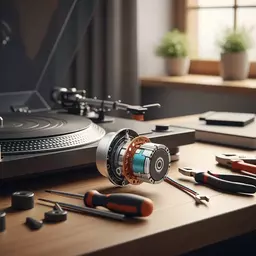 Are you ready to elevate your turntable's performance? Understanding the nuances of motor replacemen
Are you ready to elevate your turntable's performance? Understanding the nuances of motor replacemen
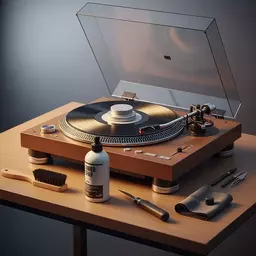 Have you ever wondered how a little maintenance can dramatically enhance your turntable's performanc
Have you ever wondered how a little maintenance can dramatically enhance your turntable's performanc
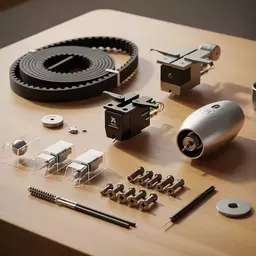 Have you ever found yourself frustrated with a turntable that just won't play right? The good news i
Have you ever found yourself frustrated with a turntable that just won't play right? The good news i
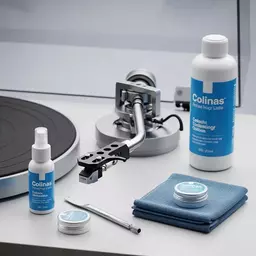 Have you ever considered how the condition of your tonearm affects the music you love? Proper tonear
Have you ever considered how the condition of your tonearm affects the music you love? Proper tonear
